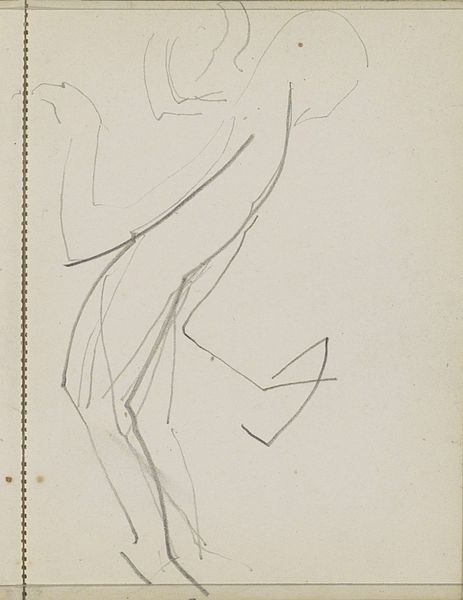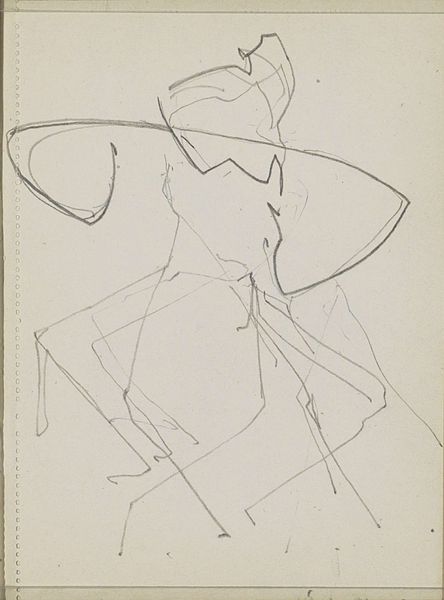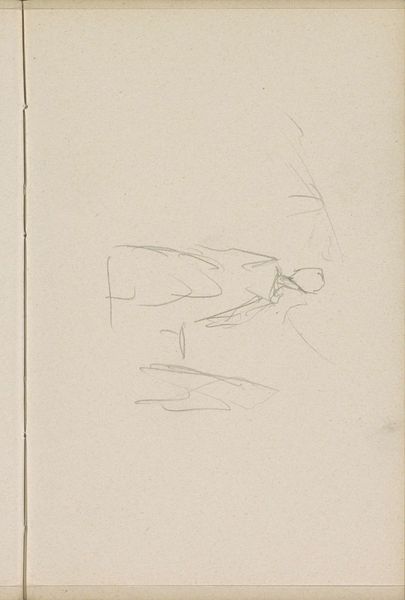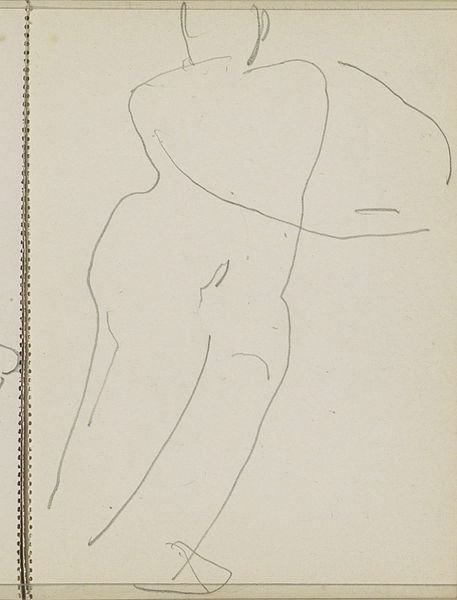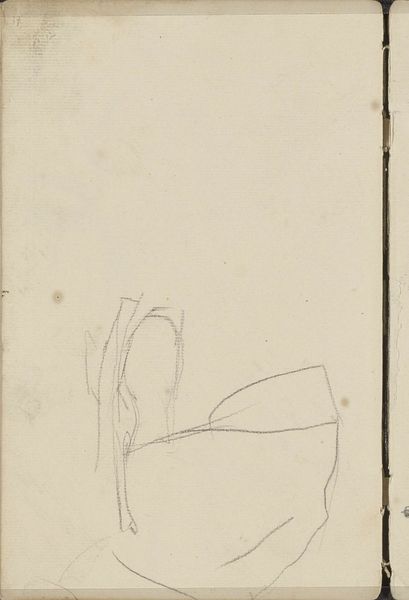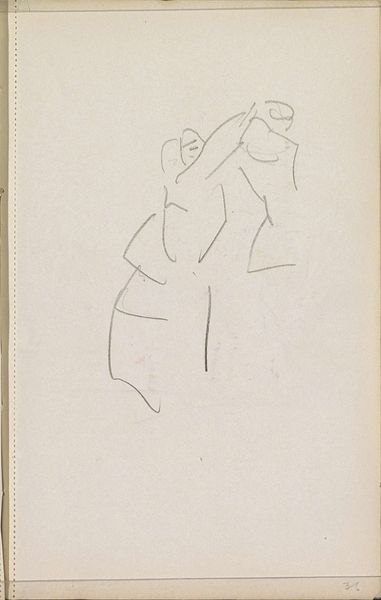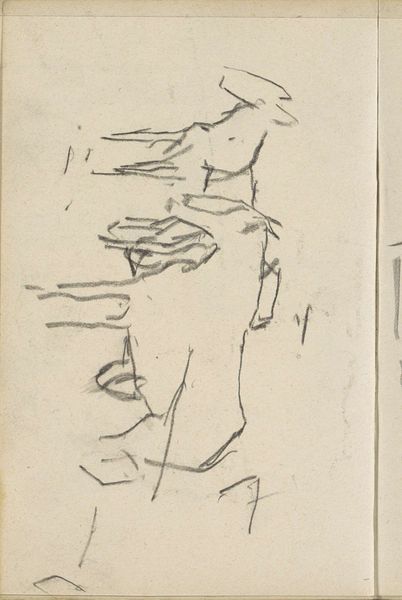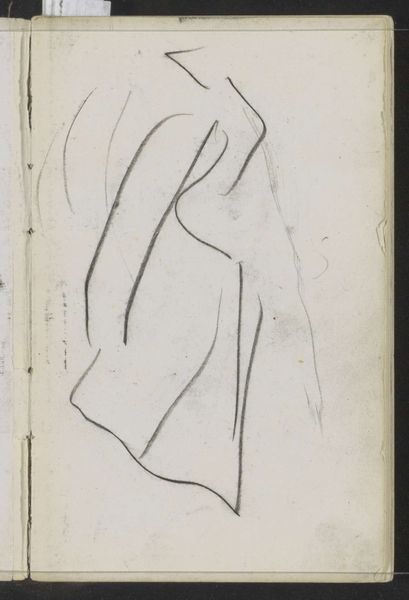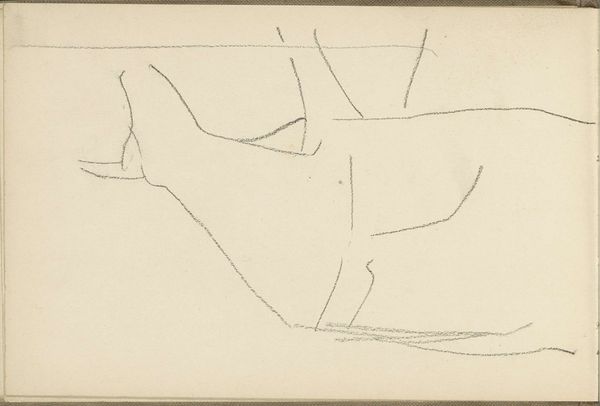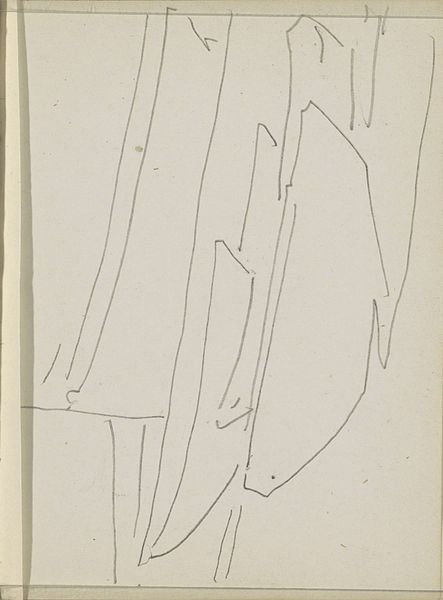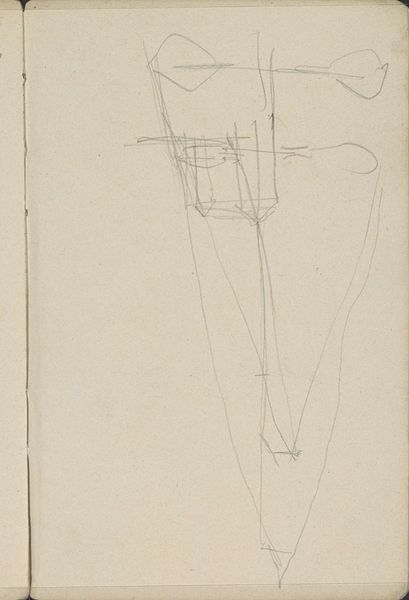
drawing, paper, pencil
#
drawing
#
pencil sketch
#
figuration
#
paper
#
form
#
pencil
#
line
Copyright: Rijks Museum: Open Domain
Curator: Welcome. We're looking at "Bovenlichaam," or "Upper Body" by Reijer Stolk, a pencil drawing on paper dated sometime between 1906 and 1945. It's currently part of the Rijksmuseum collection. Editor: My immediate response is how fragile it appears, almost ephemeral. The spare lines suggest a figure, but barely there, like a fading memory. Curator: That fragility is interesting. The sketch gives insight into artistic development—a glimpse into Stolk’s process and perhaps the influence of the period. The first half of the 20th century saw massive shifts in art's role in reflecting society. Editor: Precisely. You see the form of the figure, but you also wonder what the artist meant to convey about the body and the cultural anxieties surrounding it. Was this about dehumanization in wartime or merely form exploration? The sketch is a reflection of gender and identity during wartime and is ripe for interrogation. Curator: That's a very powerful lens. As a drawing in the collection of the Rijksmuseum it encourages discourse about value—what do we celebrate or elevate within art history? Pencil on paper suggests accessibility, democratic forms of making... but simultaneously, the gallery context frames this as high art. Editor: The sketch is both ambiguous and haunting. The visible form alludes to power dynamics between genders, yet simultaneously offers freedom of line and an unsettling energy that makes you contemplate form but question content, like is it an exploration or another erasure of female body representation? Curator: The minimal line work avoids solidifying the subject or imposing constraints. The sketch reflects this particular artistic and historical freedom within academic or institutional artistic practice, something of importance today. Editor: Stolk invites questioning—as should art, especially during politically turbulent times when art needs to invite conversation. "Bovenlichaam" makes you aware of gaps and ask about intention, the gaps inviting engagement from viewers as social actors. Curator: Agreed. It serves as a constant reminder of the historical and cultural contingencies influencing art, opening vital public conversations within gallery spaces and beyond. Editor: It shows the need for historical contexts and that a single drawing like this can open many social topics about war, power and more with continued discussion.
Comments
No comments
Be the first to comment and join the conversation on the ultimate creative platform.
